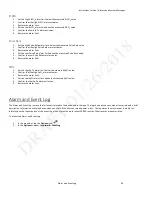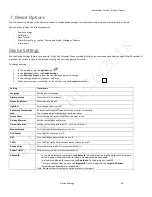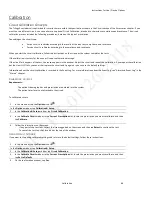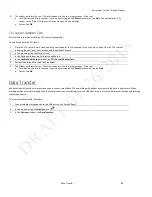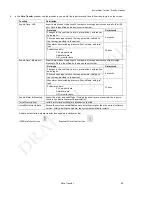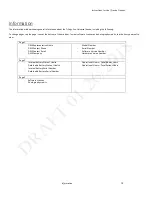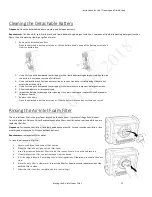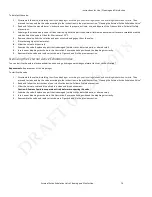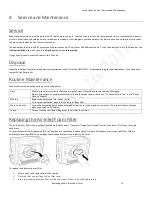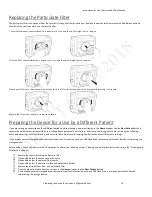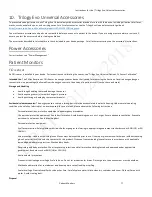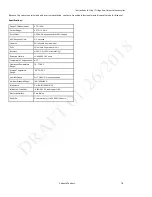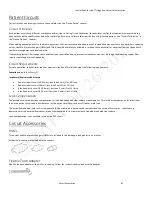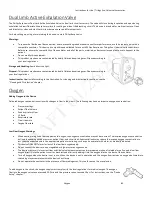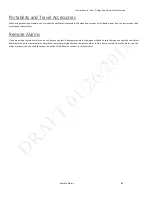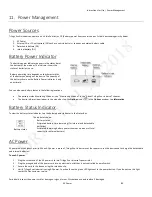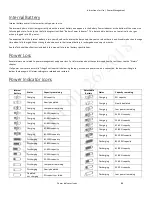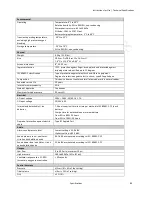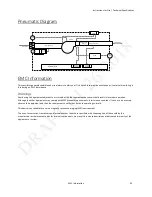
Instructions for Use | Trilogy Evo Universal Accessories
Patient Monitors
77
10.
Trilogy Evo Universal Accessories
To prevent adverse performance, use Trilogy Evo Universal only with accessories intended for use with this device, including all patient interfaces,
masks, circuits, exhalation ports, and carrying cases. For a list of accessories, see the Trilogy Evo Universal accessories guide at:
https://www.usa.philips.com/healthcare/product/HCDS2110X11B/trilogyevo
.
You must ensure accessories and parts are compatible before you connect a patient to the device. If you are using a remote alarm or nurse call,
ensure you test the accessory before starting ventilation.
The accessories described in this chapter are those included in your device package. For all other accessories, see the accessory’s instructions.
Power Accessories
For instructions, see “Power Management.”
Patient Monitors
FiO
2
sensor
An FiO
2
sensor is installed in your device. For instructions on calibrating the sensor, see “Trilogy Evo Universal Options, O
2
Sensor Calibration”
Intended Use:
The Philips Respironics FiO
2
Sensor is an oxygen sensor device that is used for measuring the fr
action of inspired oxygen (oxygen
concentration in a percentage) delivered from the oxygen source to the airway of a patient circuit (such as hose and mask).
Storage and Handling
•
Avoid rough handling that would damage the sensor.
•
Avoid exposing sensor(s) t
o rapid changes in pressure.
•
Avoid puncturing or damaging sensor membrane(s).
Accidental release measures:
The oxygen sensors contain a strong basic solution encapsulated in a plastic housing. Under normal operating
conditions, the solution (electrolyte)
is never exposed. In case of a leak, please observe the following instructions:
Personal precautions, protective equipment, and emergency procedures
Use personal protective equipment. Avoid dust formation. Avoid breathing vapors, mist, or gas. Ensure adequate ventilation. Evacuate
personnel to safe areas. Avoid breathing dust.
Personal protective equipment
Eye/face protection: Safety glasses with side-
shields or googles conforming to appropriate government standards such as ANSI (US) o
r EN
166(EU)
Skin protection: Handle with nitrile g
loves. Gloves must be inspected prior to use. Use proper glove removal technique (without touching
glove’s outer surface) to avoid skin contact with this product. Dispose of contaminated gloves after use i
n accordance with applicable
laws and good laboratory practices. Wash and dry hands.
Respiratory and body protection: Wear respiratory protection and full protective clothing tested and approved under appropriate
government standards such as ANSI (US) or CEN (EU).
Environmental precautions
Prevent further leakage or spillage if safe to do so. Do not let product enter drains. Discharge into the environment must be avoided.
Methods and materials for containment and cleaning up in case of leaking or spilling
Contain spillage. Neutralize spill with soda ash or lime. Carefully place material into clean dry container and cover. Flush spill area with
water. Avoid creating dust.
Disposal

